Table of Contents
Introduction
Are you at a crossroads in your career, wondering which employment type aligns best with your goals and lifestyle?
The choice between salary and hourly employment is a pivotal decision that can significantly impact your work-life balance, financial stability, and overall job satisfaction.
To shed light on this dilemma, let’s start by asking a fundamental question: What type of employment suits you better?
Did You Know?
In 2021, the U.S. Bureau of Labor Statistics reported that most of the U.S. workforce, comprising 55.8%, is compensated hourly.
This statistic underlines the prevalence of hourly employment in today’s professional landscape. But is hourly pay the right fit for everyone?
Join us as we delve into the nuances of salary versus hourly employment, exploring the advantages & disadvantages that will help you make an informed decision tailored to your needs.
What Is A Salary?
A salary, by legal definition, is a fixed and regular payment typically disbursed monthly or bi-weekly.
It is often denoted as an annual sum, calculated based on the average anticipated work hours for the upcoming year.
In India, the minimum salary for salaried employees varies depending on location, industry, and skill level.
As of 2023, the national minimum wage is approximately INR 178 (US$2.16) per day, equivalent to INR 5340 (US$65) monthly.
A new wage code also mandates that the basic salary should constitute 50% of the gross salary, aiming to create a more balanced salary structure by reducing allowances for most employees.
This wage code, implemented in July 2022, has implications for working hours, salary composition, and Provident Fund contributions.
What Is An Hourly Pay?
Hourly pay is a compensation method where employees earn a fixed amount for each hour worked.
In the dynamic employment landscape, hourly wages offer flexibility and a direct correlation between time invested and remuneration received.
In India, the average hourly pay varies slightly depending on the source.
According to Payscale, employees receive an average of ₹205.00 per hour, while Talent.com reports a slightly higher figure at ₹257.
Regardless of the specific amount, hourly pay structures provide employees with a tangible link between their efforts and earnings, making it a popular choice in various industries.
Workstatus Pro Tip: Free Time Card Calculator
To keep your hourly work on track and ensure accurate compensation, consider using the Workstatus Free Time Card Calculator.
This handy tool simplifies tracking your hours, making it an invaluable asset for employees and employers. Keep your work hours organized effortlessly and ensure you get the pay you deserve!
Profession with Fixed Incomes vs. Roles That Tick by the Hour
Salary Pay Professions
- Software Developer
Salaried positions in tech, like for software developers, offer stability with fixed pay and benefits, allowing focus on innovation.
- Human Resources Manager
HR managers enjoy a fixed salary, reflecting their consistent role in personnel management and strategic workforce oversight.
- Marketing Manager
Marketing managers benefit from a fixed salary, ensuring a consistent focus on strategic planning and campaign execution.
- Financial Analyst
Salaried positions for finance professionals, like financial analysts, align with their analytical and planning roles, providing stability.
- Executive Assistant
Executive assistants have prevalent salaried positions, ensuring financial stability in roles demanding consistent support to high-level executives.
Read More: Understanding Salaries In India: An Overview
Hourly Pay Professions
- Retail Sales Associate
Hourly pay is standard in retail, offering flexibility during peak hours for employers and employees.
- Freelance Graphic Designer
Freelancers, including graphic designers, opt for hourly pay to reflect project-based work accurately.
- Customer Service Representative
Hourly pay in customer service ensures fair compensation for time spent addressing inquiries and providing assistance.
- Delivery Driver
Jobs like delivery drivers often have hourly pay, accommodating variable schedules and routes in the delivery sector.
- Construction Worker
Construction workers commonly receive hourly pay, compensating for their work’s hands-on, project-based nature.
Understanding Exempt and Non-Exempt Roles
Exempt versus non-exempt employment status is directly tied to overtime compensation.
- Non-exempt employees are eligible to receive overtime pay.
- Exempt employees do not qualify for overtime pay.
While there is no specific regulation on this matter in India, in the context of U.S. federal law, most employees covered by the Fair Labor Standards Act (FLSA) are considered non-exempt.
However, various factors contribute to determining an employee’s exempt or non-exempt status:
- The nature of the work they perform
- Their compensation structure
- The type of employment, whether hourly or salaried
Let’s understand in more detail.
Exempt Employees
Exempt employees, including executives and sales professionals, can work overtime without additional pay, given their average hourly rate exceeds $27.63.
They are exempt from minimum wage and other FLSA protections, enjoying consistent pay regardless of overtime.
Non-Exempt Employees
Non-exempt employees, typically hourly, receive 1.5 times overtime pay if their average hourly rate is below $27.63.
They enjoy minimum wage benefits and FLSA rights, ensuring compensation for all hours worked beyond the standard 40 hours per week.
To help you better understand the concept, here is the comparison table breaking details into easy-to-understand chunks.
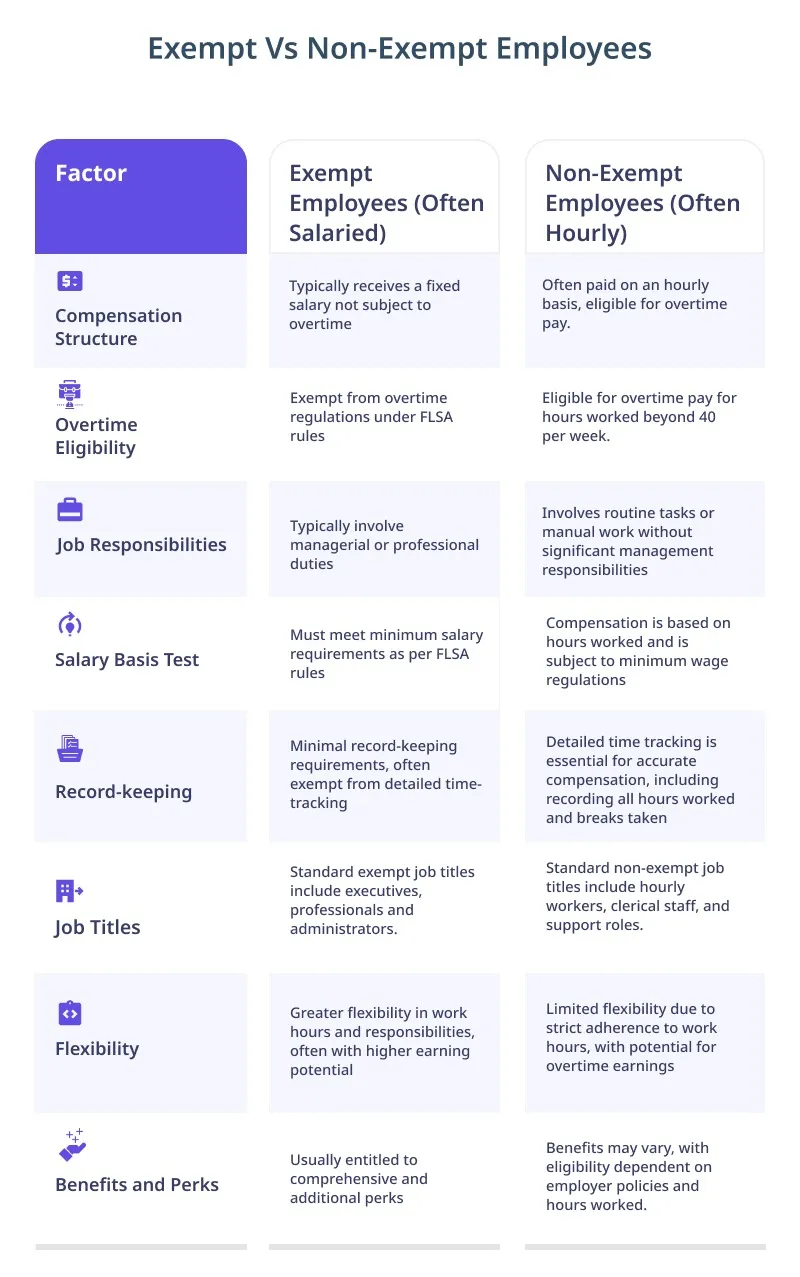
Fixed Salary Advantages And Disadvantages
Advantages
- Financial Stability
A fixed salary provides employees a predictable and stable income, enabling better financial planning and security.
- Focus on Job Responsibilities
Salaried positions often allow employees to concentrate on their responsibilities without the distractions of tracking hours, promoting a more focused and efficient work environment.
- Benefits Package
Fixed salary positions frequently come with comprehensive benefits packages, including health insurance, retirement plans, and other perks, enhancing overall compensation.
- Career Development Opportunities
Salaried employees may have better opportunities for career development as employers invest in their staff’s long-term growth and success.
- Professional Status
A fixed salary can contribute to professional status and stability within the organization and the broader professional community.
Read More: Decoding The Salary Structure In Japan
Disadvantages
- Limited Overtime Compensation
Salaried employees may only receive additional overtime, potentially leading to longer work hours with corresponding financial rewards.
- Less Flexibility
Fixed salaries may limit flexibility in work arrangements, making it challenging for employees to negotiate non-traditional work schedules.
- Stagnant Income in Short-Term Fluctuations
During economic downturns or company financial challenges, fixed salaries may remain stagnant, offering less immediate financial relief during tough times.
- Risk of Overworking
Some salaried positions are expected to have extended work hours, leading to a risk of overworking without proportional compensation.
- Potential for Inequity
In some cases, fixed salaries may lead to inequities, as employees with similar roles may receive the same pay regardless of variations in individual performance or contributions.
How Workstatus Help Salaried Employees
Workstatus is a platform designed to elevate the work experience for salaried employees, offering features that comprehensively streamline and optimize their workflow.
1. Time Tracking:
![]()
Efficient time tracking is a foundational element of Workstatus, contributing to enhanced productivity and work-hour management. This feature encompasses:
- Automated Clock-ins and Clock-outs: Workstatus automates the time logging process, reducing the manual effort required for traditional timekeeping methods. This ensures accuracy and minimizes the potential for errors.
- Real-time Monitoring: Salaried employees benefit from the ability to track their work hours in real-time, providing a transparent view of their daily and weekly commitments.
- Historical Data Access: The platform maintains a comprehensive historical record of time-tracking data, allowing employees to review past working hours and get paid accurately.
2. Productivity Monitoring:
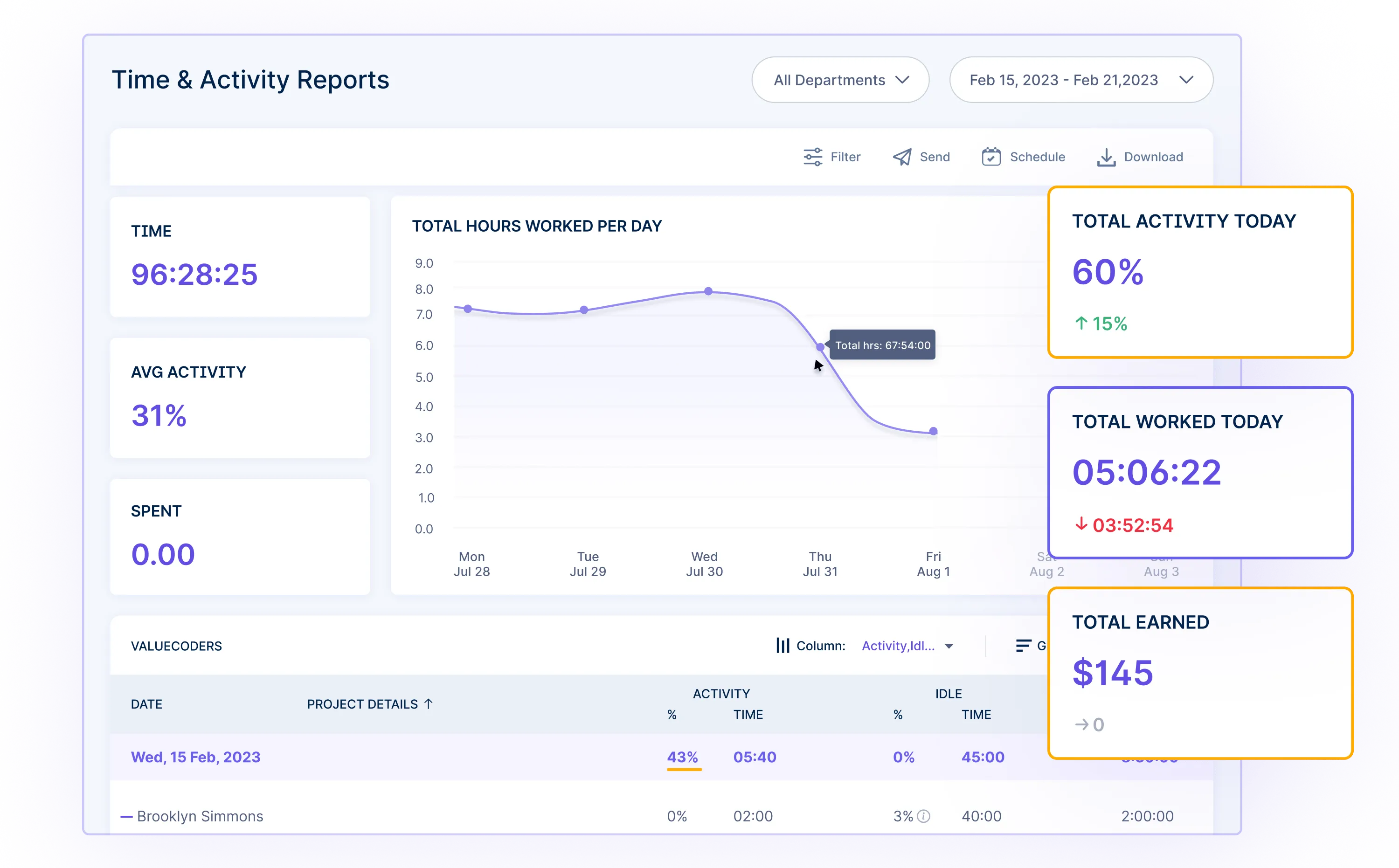
Workstatus goes beyond simple time tracking by offering features that actively optimize salaried employees’ productivity.
- Task Management: Employees can break their workload into manageable tasks, fostering better organization and focus on priority items. This promotes a systematic approach to work, improving efficiency.
- Performance Analytics: Salaried employees gain access to detailed performance analytics, offering insights into productivity trends over time. This data-driven approach allows for continuous improvement & informed decision-making.
3. Customizable Salary Reports:
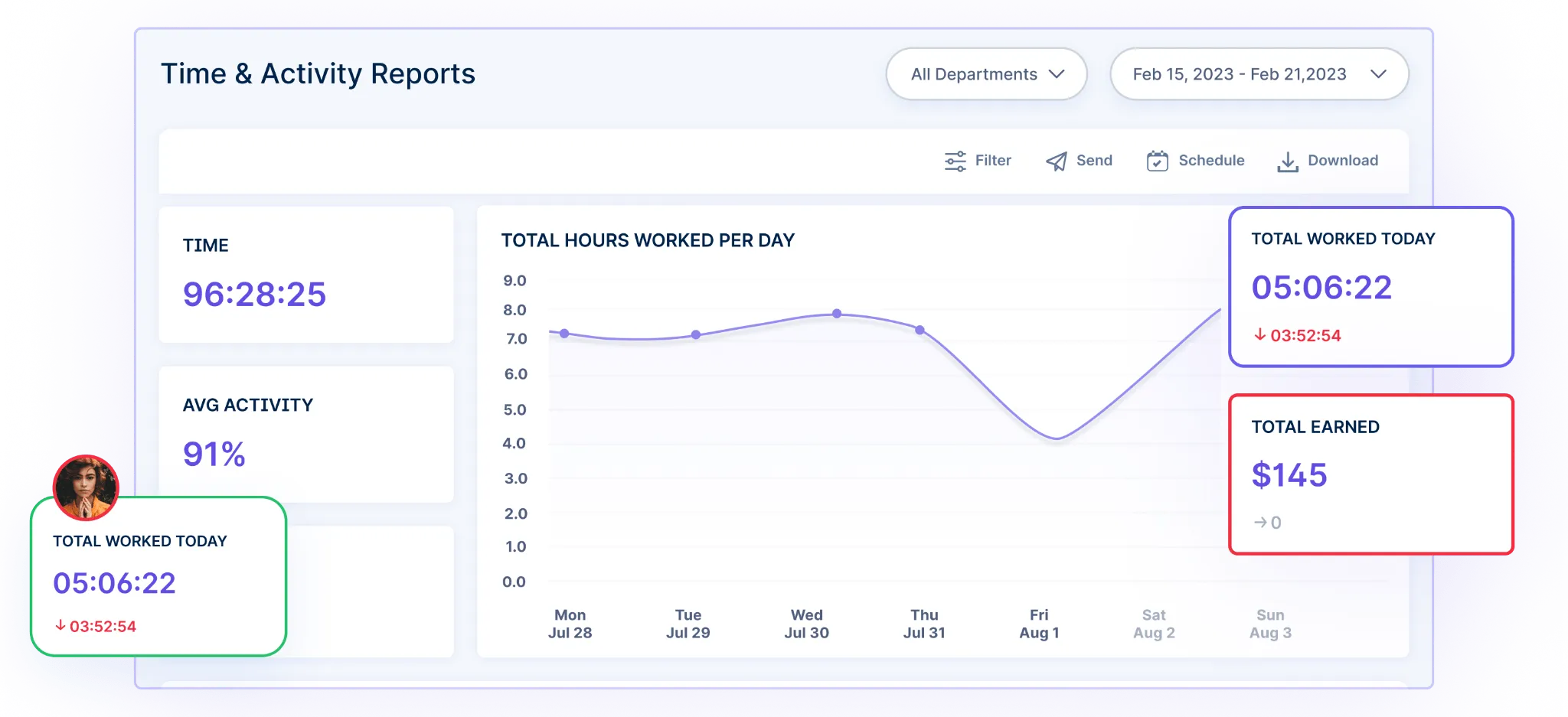
Efficient reporting is a cornerstone of Workstatus, providing salaried employees with detailed insights into their work activities. Specifically tailored for salary structures, the customizable reports include:
- No. of Hours Worked: Salaried employees can generate reports detailing the hours worked within a specified period. This transparency ensures accurate time-tracking for salary distribution.
- Timesheets: Workstatus allows employees to generate detailed timesheets, offering a comprehensive overview of daily and weekly work hours. This feature aids in precise record-keeping and payroll accuracy.
- Attendance Records: The platform provides detailed attendance records, allowing salaried employees to track their presence during work hours.
This ensures precision in salary calculations and provides a holistic view of individual work commitment.
Advantages Of Hourly Salary For Employees
- Overtime Compensation
Hourly employees can earn additional income through overtime pay, providing financial incentives for extra work hours.
- Flexibility in Work Hours
Hourly arrangements often offer greater flexibility in work schedules, allowing employees to adapt their hours to personal commitments or preferences.
- Fair Compensation for Actual Work
Hourly pay ensures that employees are compensated for the exact hours worked, promoting fairness and transparency in remuneration.
Read More: What Is a 2-2-3 Schedule and How Does It Work?
- Varied Work Opportunities
Hourly positions are prevalent in industries with diverse project demands, providing employees with exposure to various tasks and projects and fostering skill development.
- Part-Time Employment Options
Hourly arrangements facilitate part-time employment, enabling individuals to balance work with other responsibilities, such as education or caregiving.
Disadvantages of Hourly Salary for Employees
- Income Variability
Hourly employees may experience income fluctuations due to work-hour variations, making it challenging to predict monthly earnings accurately.
- Limited Job Security
Hourly positions may need more job security associated with salaried roles, as employment can be contingent on project availability and business needs.
- Benefits and Perks Disparity
Hourly employees may need more access to benefits such as health insurance, retirement plans, & paid time off than their salaried counterparts.
- Inconsistent Workload
The nature of hourly work may lead to inconsistent workloads, with periods of high demand followed by slower periods, impacting income stability.
- Less Opportunity for Career Development
Hourly positions offer fewer opportunities for career advancement compared to salaried roles, potentially limiting long-term professional growth.
How Workstatus Helps Hourly Salaried Employees
Workstatus is a robust platform designed to cater to the intricate needs of hourly salaried employees, providing tools and features that elevate their work experience to new heights.
1. GPS Tracking:
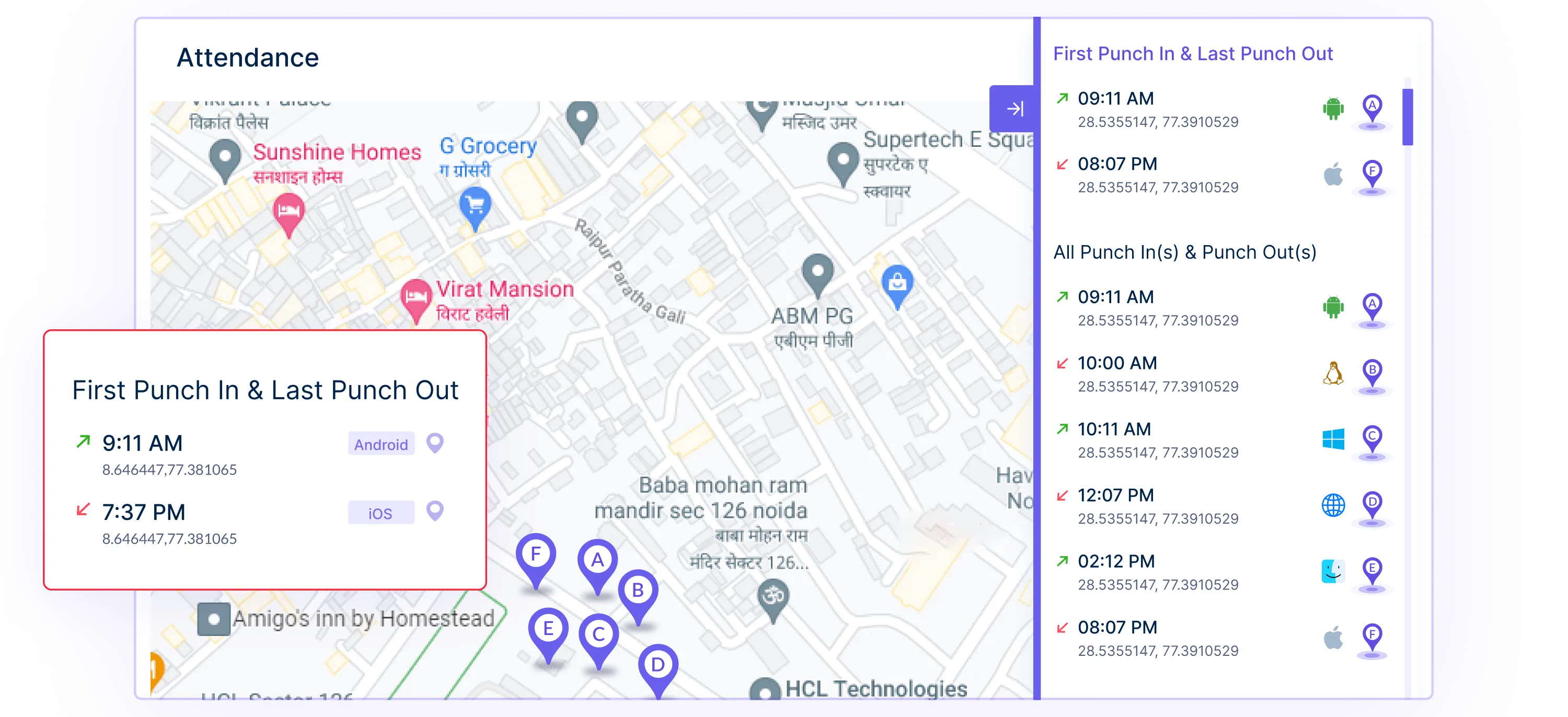
Workstatus incorporates sophisticated GPS tracking functionalities, affording hourly employees a range of advantages:
- Location Accuracy: The platform ensures precise tracking of employees’ locations, fostering accountability and transparency, especially in remote or field-based work scenarios.
- Travel Time Calculation: Workstatus automatically calculates travel time, allowing hourly employees to account for commuting time providing a more accurate reflection of work hours.
2. Client Invoicing:
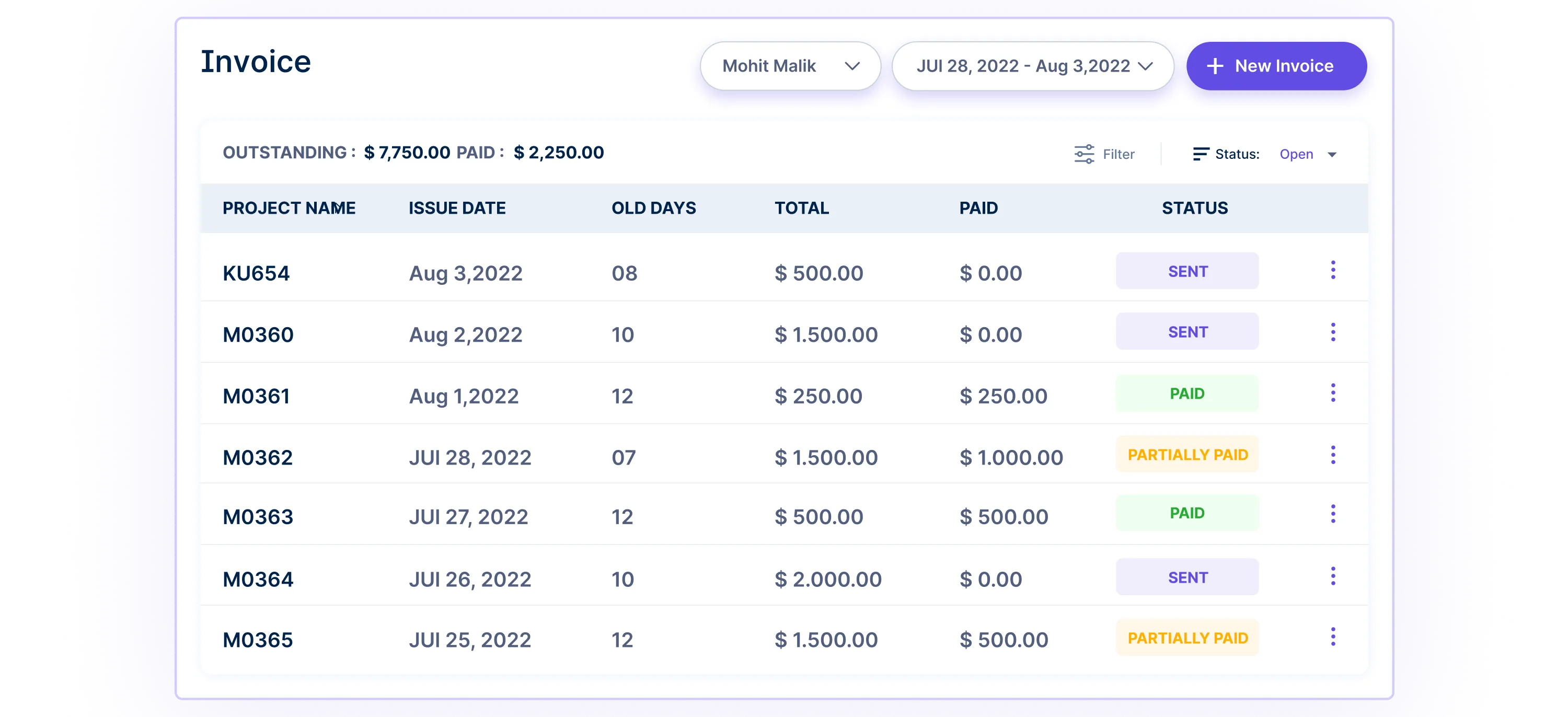
Efficient client invoicing is facilitated by Workstatus, streamlining the invoicing process for hourly employees.
- Automated Invoicing:The platform automates the generation of invoices based on tracked work hours, reducing administrative efforts and minimizing the likelihood of billing errors.
- Detailed Billing Reports: Hourly employees can generate comprehensive client billing reports, offering transparency into work hours, project costs, and resource utilization.
- Project-Specific Invoices:Workstatus enables employees to create invoices tailored to specific projects, enhancing professionalism and ensuring accuracy in client billing.
3. Overtime Tracking:
![]()
For hourly employees frequently engaging in overtime work, Workstatus provides a comprehensive suite of features:
- Automated Overtime Calculation: The platform automatically calculates and tracks overtime hours, ensuring accurate and timely compensation for additional work.
- Overtime Alerts: Hourly employees receive alerts when approaching or exceeding overtime limits, fostering awareness and enabling better time management.
- Overtime Reports: Workstatus generates detailed reports on overtime hours, providing employees and employers with valuable insights for future planning, resource allocation, and decision-making.
4. Project Budgeting:
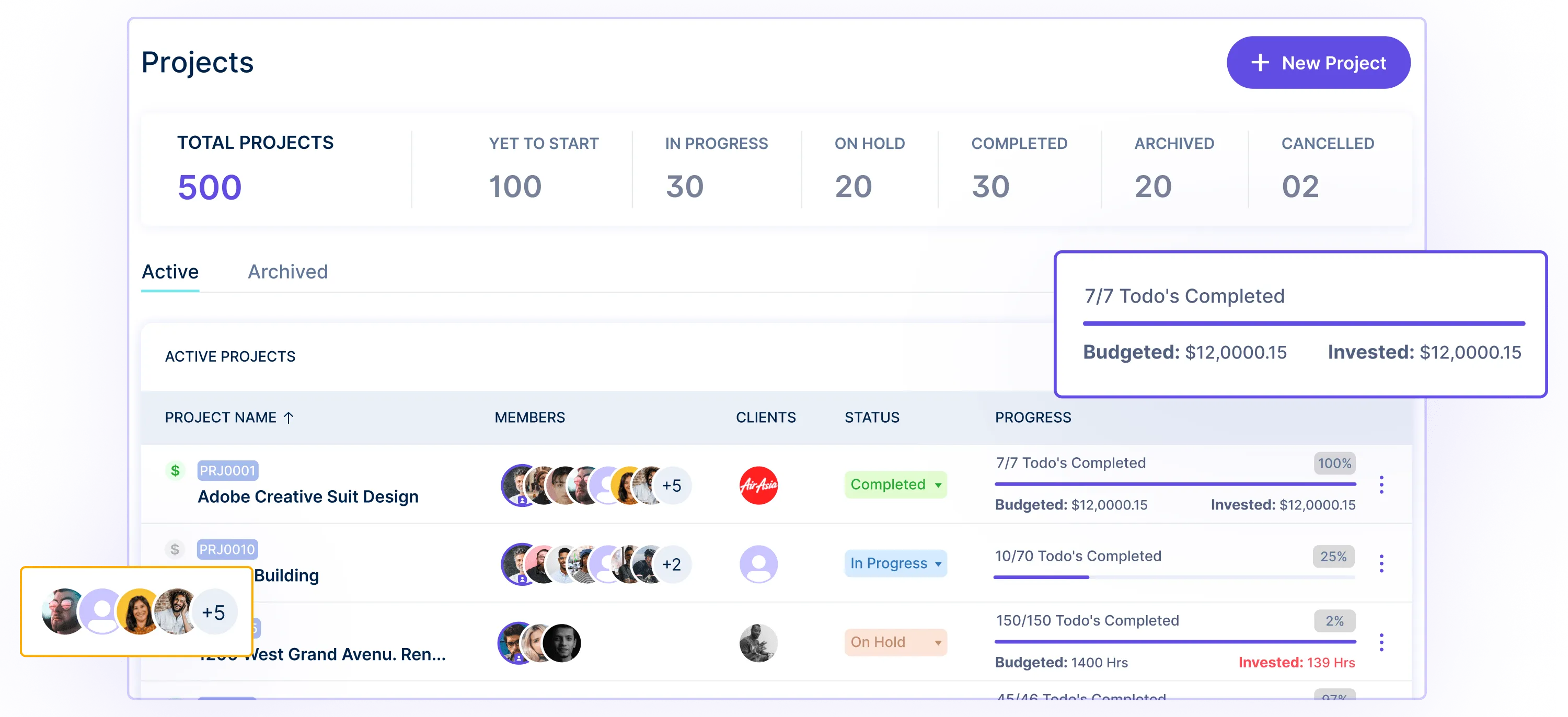
Workstatus supports hourly salaried employees in meticulous project budgeting through various features:
- Budget Monitoring: The platform enables real-time monitoring of project budgets, preventing overruns and ensuring financial prudence.
- Expense Tracking: Employees can track project-related expenses seamlessly, contributing to comprehensive budget management and accurate financial reporting.
- Budget Forecasting: Workstatus provides tools for forecasting project budgets, aiding hourly employees in making informed decisions, anticipating financial needs, and avoiding unexpected budgetary challenges.
In summary, Workstatus is a comprehensive solution tailored to salaried and hourly employees, addressing each group’s needs.
Salary or Hourly: Which Employment Type Suits You?
Choosing between a salary and hourly employment structure is a significant decision that depends on various factors. Here are five steps to help you determine which employment type suits you best:
1. Assess Your Lifestyle and Financial Goals:
Consider your financial priorities and lifestyle preferences.
A salaried position might be suitable if you value a stable, predictable income and prefer consistent pay.
On the other hand, if flexibility and the potential for increased earnings through overtime are essential, an hourly arrangement may align better with your goals.
Read more: What Are Different Types Of Work Schedules For Your Team?
2. Evaluate Work-Life Balance
Reflect on your desired work-life balance.
Salaried positions often come with a standard 40-hour workweek, offering predictability but potentially requiring additional hours without overtime pay.
Hourly positions may provide more flexibility, allowing you to adjust your schedule to accommodate personal commitments.
3. Examine Job Responsibilities
Analyze the nature of the job and the expected workload.
Salaried positions may be more appropriate for roles with consistent responsibilities and a focus on long-term projects.
Hourly positions are often found in industries with variable workloads, offering opportunities for diverse tasks and project-based work.
4. Consider Benefits and Perks
Evaluate the benefits and perks associated with each employment type. Salaried positions commonly come with comprehensive benefits, including health insurance, retirement plans, & paid time off.
Hourly positions may offer flexibility but could have fewer benefits, requiring a closer examination of the overall compensation package.
5. Understand Career Growth Opportunities:
Consider each employment type’s long-term career growth opportunities.
Salaried positions may provide a structured career path with opportunities for advancement, while hourly roles may offer varied experiences but require proactive career planning.
Assess which aligns better with your professional aspirations.
Ultimately, the decision between salary and hourly employment should align with your preferences, financial goals, and career aspirations.
Take the time to evaluate the pros and cons of each type, considering your unique circumstances and priorities, to make an informed choice.
Conclusion
The choice between salary and hourly employment hinges on individual preferences and lifestyle considerations.
Salaried positions offer stability and benefits, while hourly arrangements provide flexibility and fair compensation for actual work hours.
To navigate this decision and optimize your work experience, consider exploring Workstatus.
This comprehensive platform tailors solutions for salaried and hourly employees, offering tools that enhance efficiency, transparency, and accountability.












